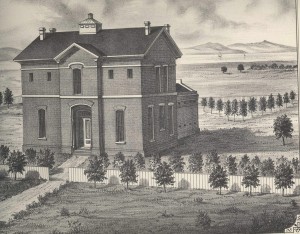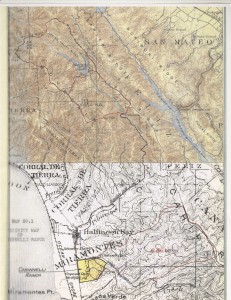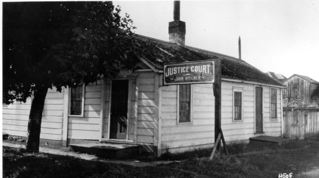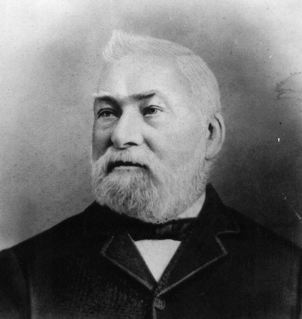This is a wonderful drawing of the county jail in Redwood City, circa 1872. Has some institutional feel to it but it also looks like a country home; what do you think?
From “The Illustrated History of San Mateo County,” Moore & DePue, publishers (1878). This beautiful book was “saved” and published by Gilbert Richards Publications, Woodside, California in 1974.
In Half Moon Bay, if you were caught speeding you’d land in Judge Pitcher’s “courtroom.” 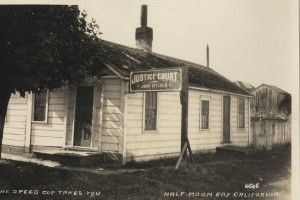
Look on the map below and find the land, Casinnelli Ranch; it’s colored yellow and there’s an arrow pointing to it, below the “Miramontes tract.” In an earlier WWII post, I mentioned Mr. E.J. Casinnelli as he owned 423 acres around the Johnston House.
In 1931, the Cassinelli Ranch, south of Half Moon Bay, was being considered as a location for San Francisco’s City and County Jail in San Mateo County. There are several documents associated with the project that did not materialize. Some people will find the information contained within the reports enlightening so I will provide it here.
Report on Water Supply Possibilities of Cassinelli Ranch as a site for San Francisco City and County Jail
By Charles H. Lee, Consulting Hydraulic Engineer
Description of Property
The Cassnelli Ranch, comprising 423 acres, is located in San Mateo County, California, one mile south of Half Moon Bay. The west boundary fronts on the Half Moon Bay-Purissima Highway for a distance of over 1/2 mile. A surfaced road from the main highway runs along or adjacent to the north boundary for 3/4 miles.
The western portion of the property, embracing approximately 200 acres, is flat land lying along the main highway. It merges into gently sloping land and then broad rolling hill slopes to a crest at the rear of the property. The topography is smooth and practically all of it is clear of brush, giving excellent visibility.
All but a small tract in the northeast corner has been under cultivation for many years. A portion of the flat land has been planted in artichokes and miscellaneous vegetables, and the remainder and the adjacent hill land in hay and grain. The artichokes are irrigated every season and vegetables when water is available.
Leon Creek flows through the Ranch near the northeast boundary for a distance of 3095 feet, where it has a cut channel approximately 35 feet deep and 100- to 200 feet wide. This stream is a tributary of Pilarcitos Creek, joining it at Half Moon Bay about 1-1/4 miles below the Ranch and flowing thence to the Pacific Ocean, a distance of 1-1/4 miles.

